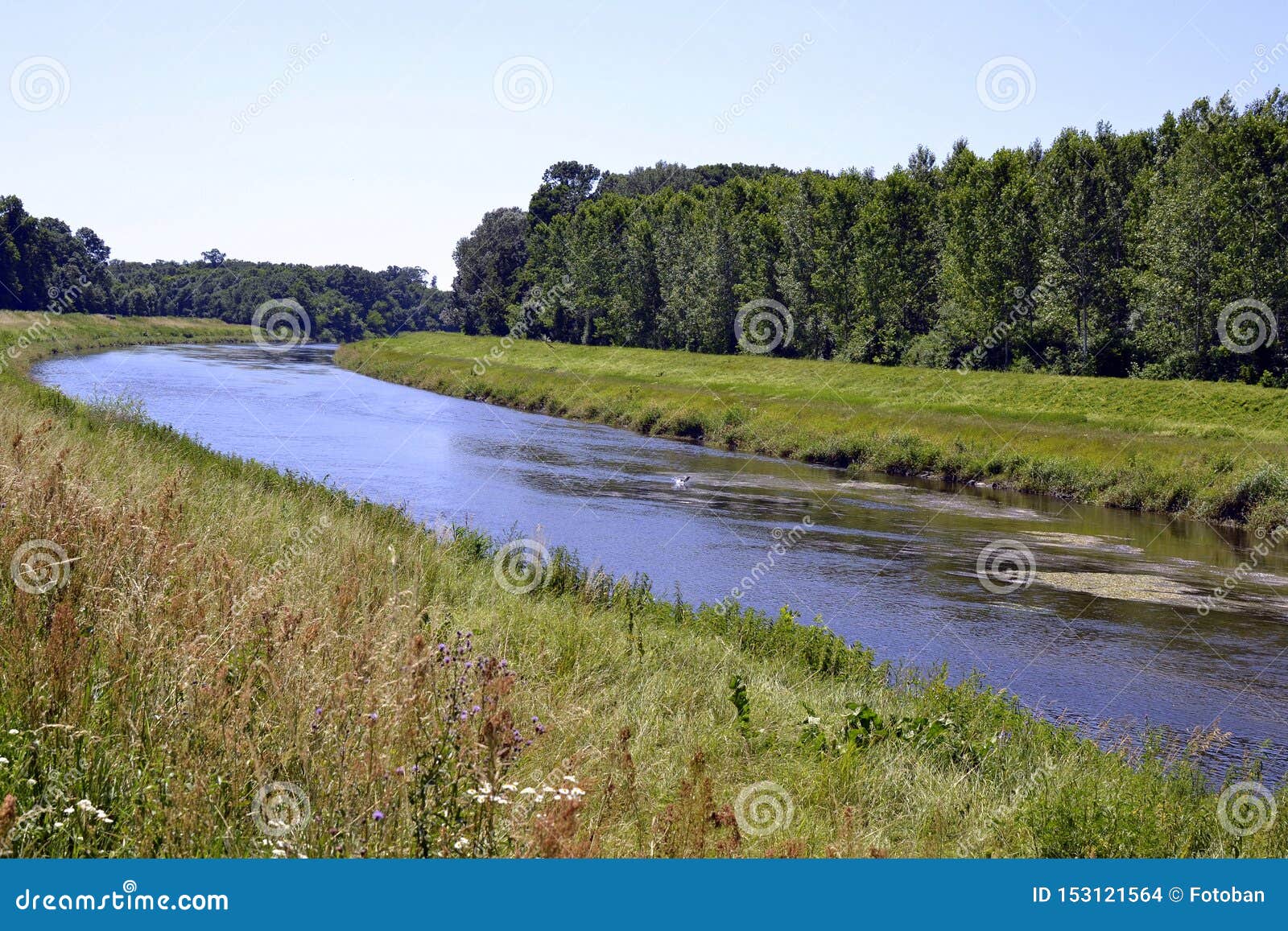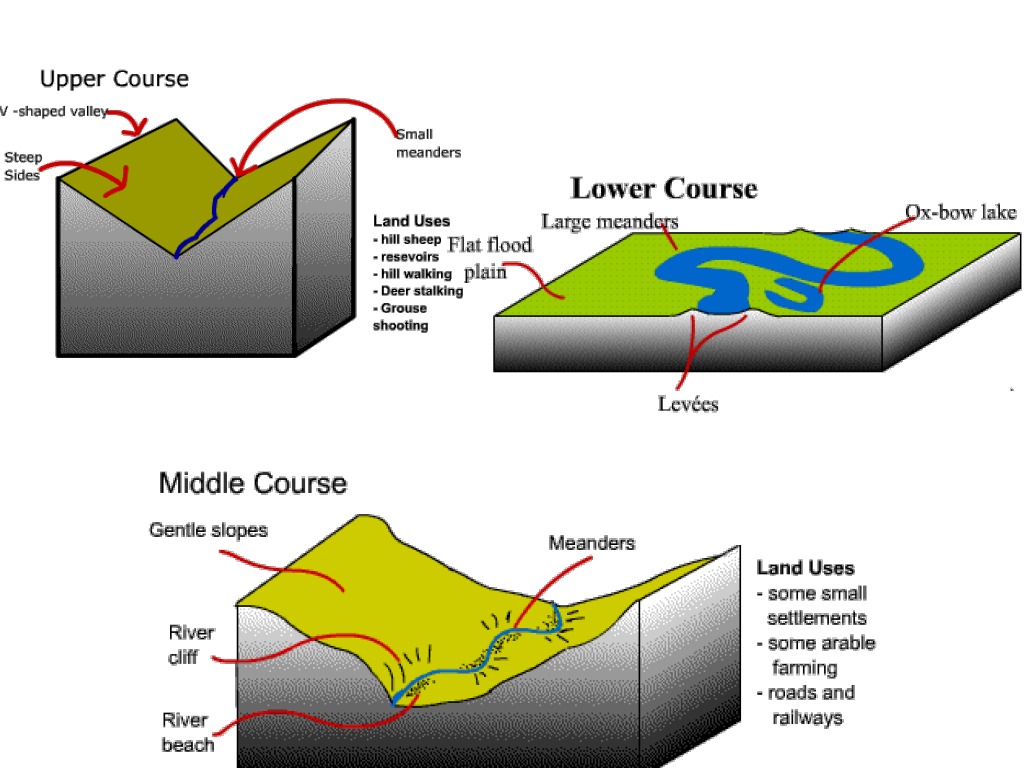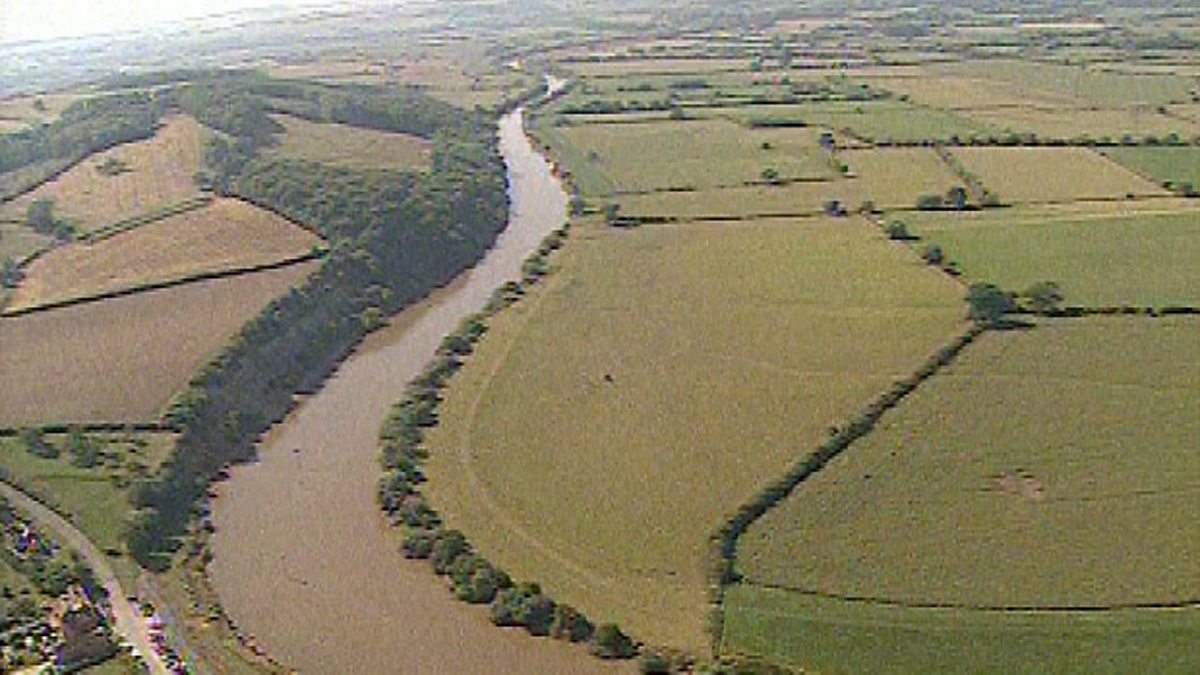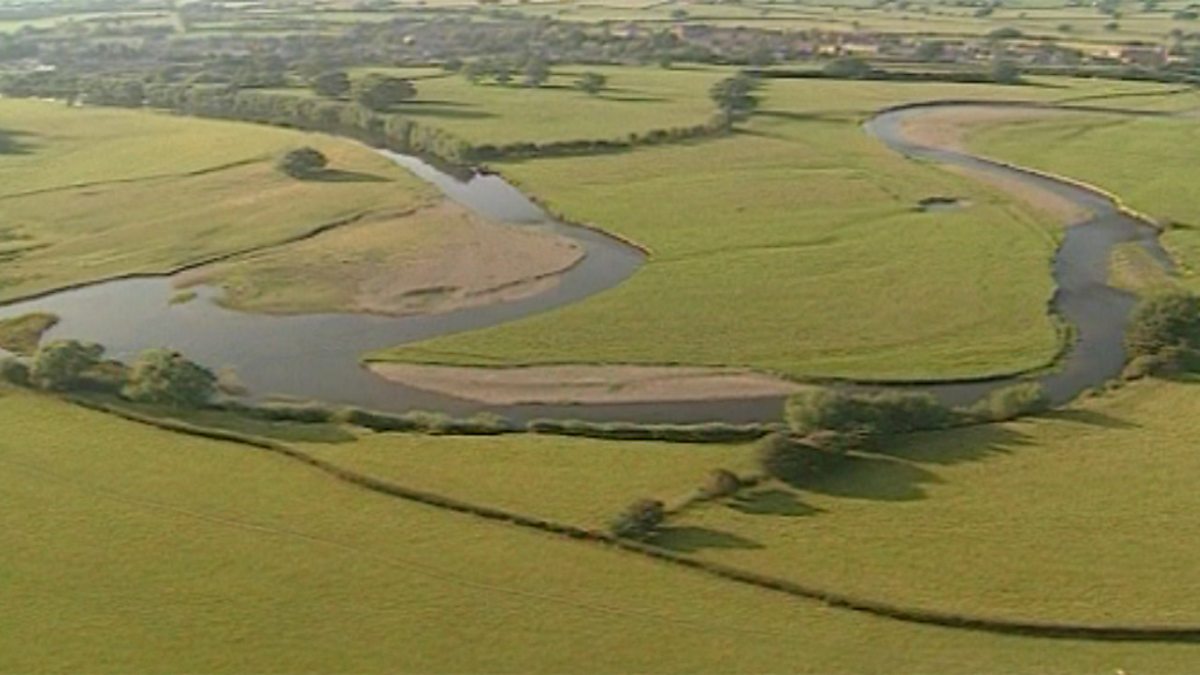
River Formation Course, Mechanism, Erosion & Processes
The lower course of river is described in this video which follows the lower course of the River Aire and River Ouse, the Humber Estuary and Spurn Point. Fea.

River Thaya on Lower Course in Dry Season Stock Photo Image of thaya, lower 153121564
A river basically, has three parts. We call them the courses of a river. This lesson on river landscape (also called riverscape) explains to you about these courses or stages of a river and their wildlife. Where do rivers begin? Most rivers begin in hills or mountains. Where do rivers end? Rivers flow down to the sea and end there.

River cross profile Geography ShowMe
The lower course of a river is the final stretch of the river's journey towards its mouth, where it typically meets the sea or a large body of water. This part of the river is characterized by several distinct features and processes. Wider and Deeper: As the river flows downstream, it tends to become wider and deeper.

GCSE (91) Geography The Course of a River (With images) Gcse geography, Geography, Gcse
Lower course of river Source - the point at which the river starts. Interlocking spurs - where the river winds between ridges. Gorge - a deep valley caused by the wearing back of a.

Rivers Fluvial Processes
What is a river? Erosion Transportation Deposition What are river landforms? Test your knowledge What do you know? What is the longest river in the world? Key points Rivers form part of the.

Scotland Geography Rivers Lower course P5, P6, P7 Second Level classroom and home
River landforms Waterfalls Meanders Floodplains and levees River landforms A river's features will change as it moves from the upper course to the lower course . In the upper course.

FEATURES OF MIDDLE AND LOWER COURSE OF A RIVER SUCCESS HUB
Description of the upper, middle, and lower course of the river for GCSE Geography (9-1).

The River Tees landforms of erosion and deposition Geography
A river is a natural flowing watercourse, usually a freshwater stream, flowing on the earth's land surface or inside caves towards another waterbody at a lower elevation, such as an ocean, sea, bay, lake, wetland, or another river.

Rivers The lower course YouTube
River Features Typically, a river valley can be divided into three sections; the upper course, the middle course and the lower course. There are particular river features which we can expect to find in each of these sections. We shall examine each section of the river along with their various features in some detail.

River Landforms of the Lower Course (Floodplains and Deltas) Online learning tools, Online
Landforms and land use: a general film about these features in the lower course of a river.

River Landforms of the Lower Course by TheGeographyOasis Teaching Resources
Deltas Deltas are formed when a river enters a standing or low-energybody of water (a lake, lagoon or sea). Velocity drops partly because of the lack of tidal currents (which would transport sediment away), but also because of the shallower gradient at the mouth of a river.

BBC Two Landmarks, The River Severn, The Course of the River, Creation of a flood plain in the
The Three Courses of a River are The Upper Course, The Middle Course, and The Lower Course. In this video learn common features of each course.

WJEC 2016 SPEC Theme 1 RIVERS Lesson 5 Landforms in the Lower Course Teaching Resources
Depositional processes in the lower course of the river lead to the formation of levées and floodplains. Periods of prolonged heavy rainfall causes discharge in a river to rise meaning that the river level will rise above the banks and flood the surrounding land. Over time repeated annual flooding will lead to alluvium and sediment being deposited, forming levées and flood plains.

iGCSE Geography Rivers Lower Course Features GeogPodCast YouTube
Introduction Three courses of a river The Upper Course of a River Introduction The rivers have a huge impact on the lives of people in India. They provide water, electricity, and transport for a large number of people. We can trace the history and culture of our country through these magnificent rivers.

Can Go Around Australia Murray River, Lower Reaches
Article shared by : ADVERTISEMENTS: If we look into the whole length of a river we will notice that it has three definite courses: 1. The Upper or Mountain Course 2. The Middle or Plain Course 3. The Lower or Deltaic Course. 1. The Upper Course: In the mountainous course, a river passes through a steep slope.

BBC Two Landmarks, The River Severn, The Course of the River, Middle course of the River Severn
The lower course is the end of a river.It flows into another body of water. This could be the sea, an ocean, a loch or another river. In the lower course, the river channel close channel The space.